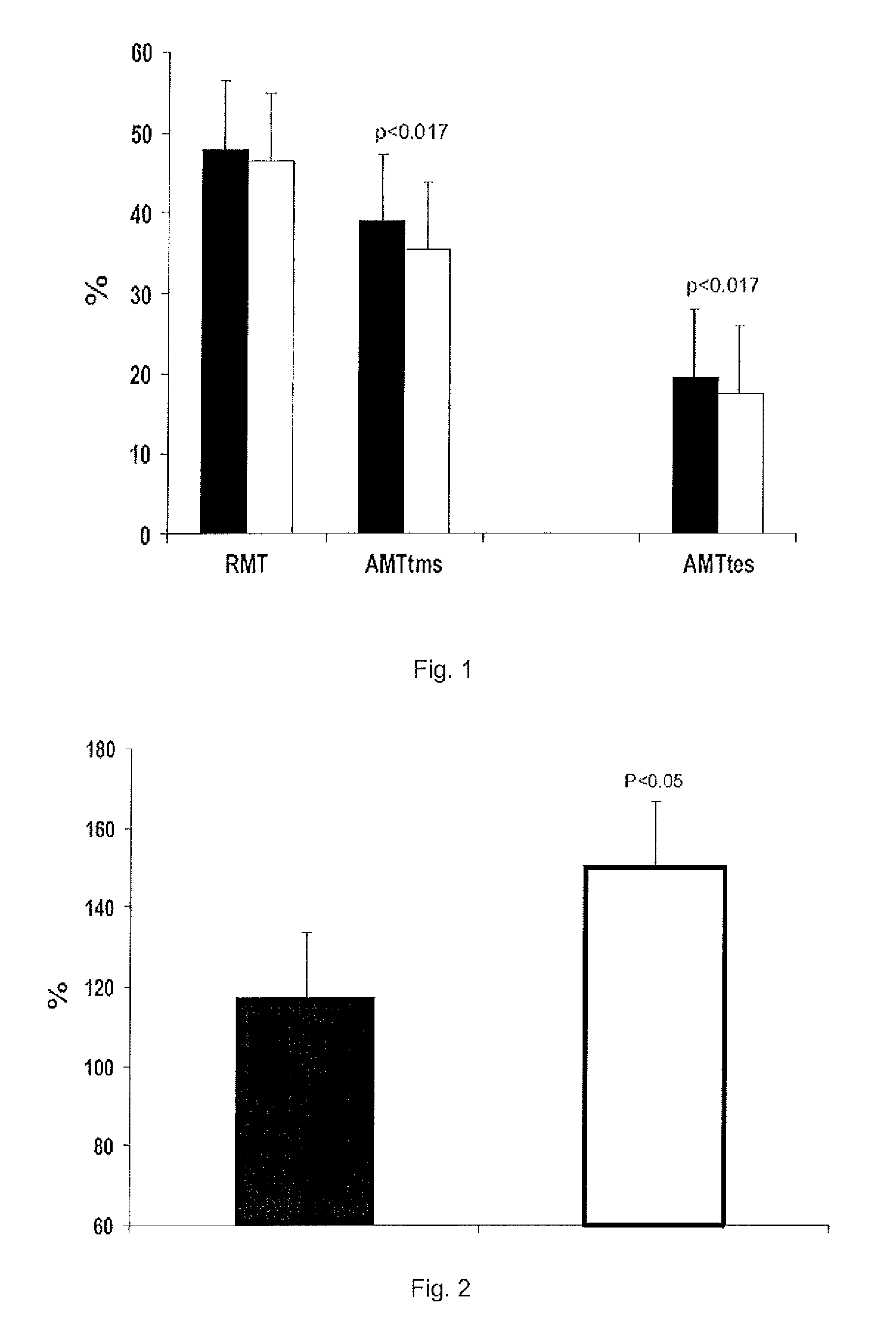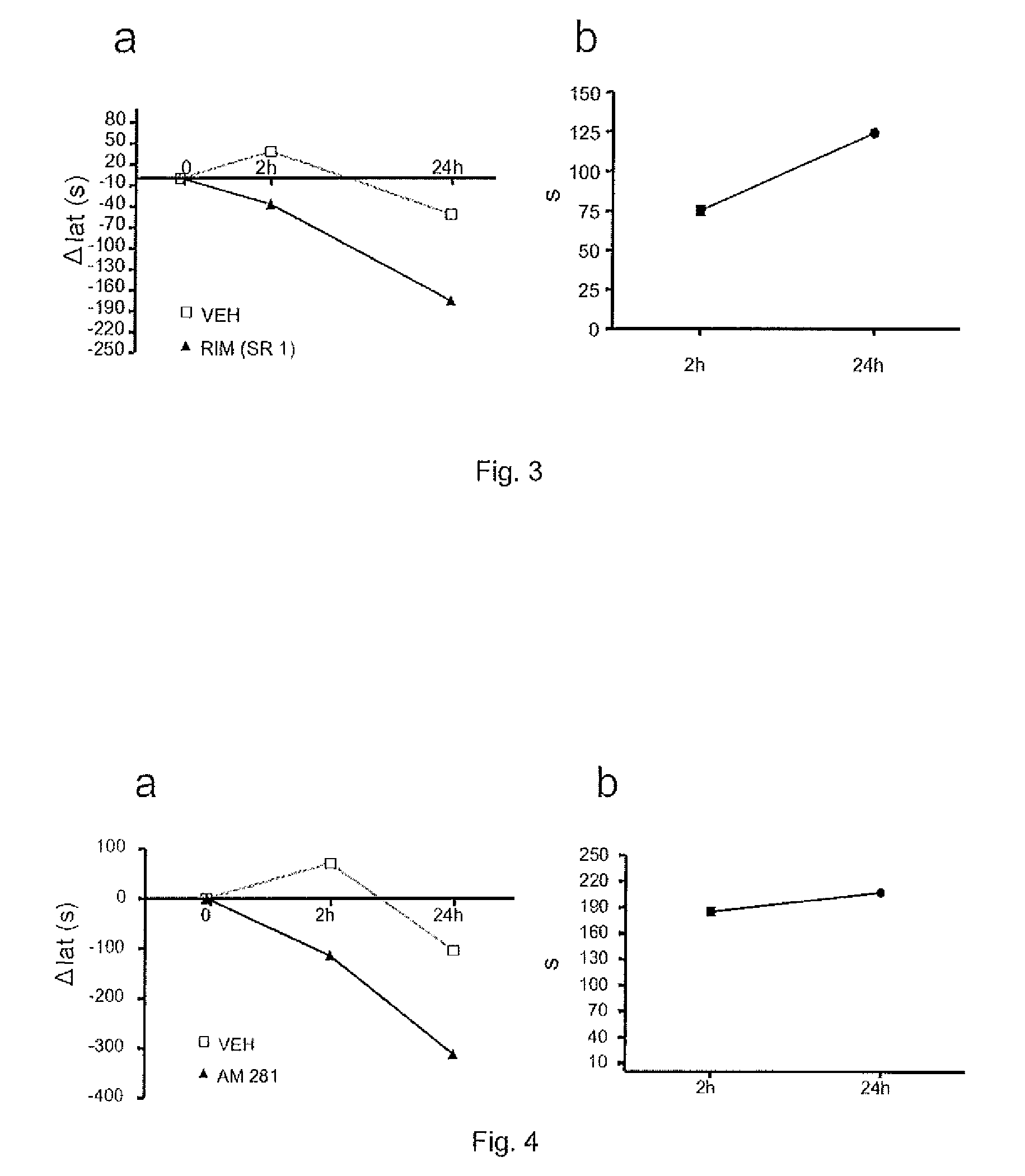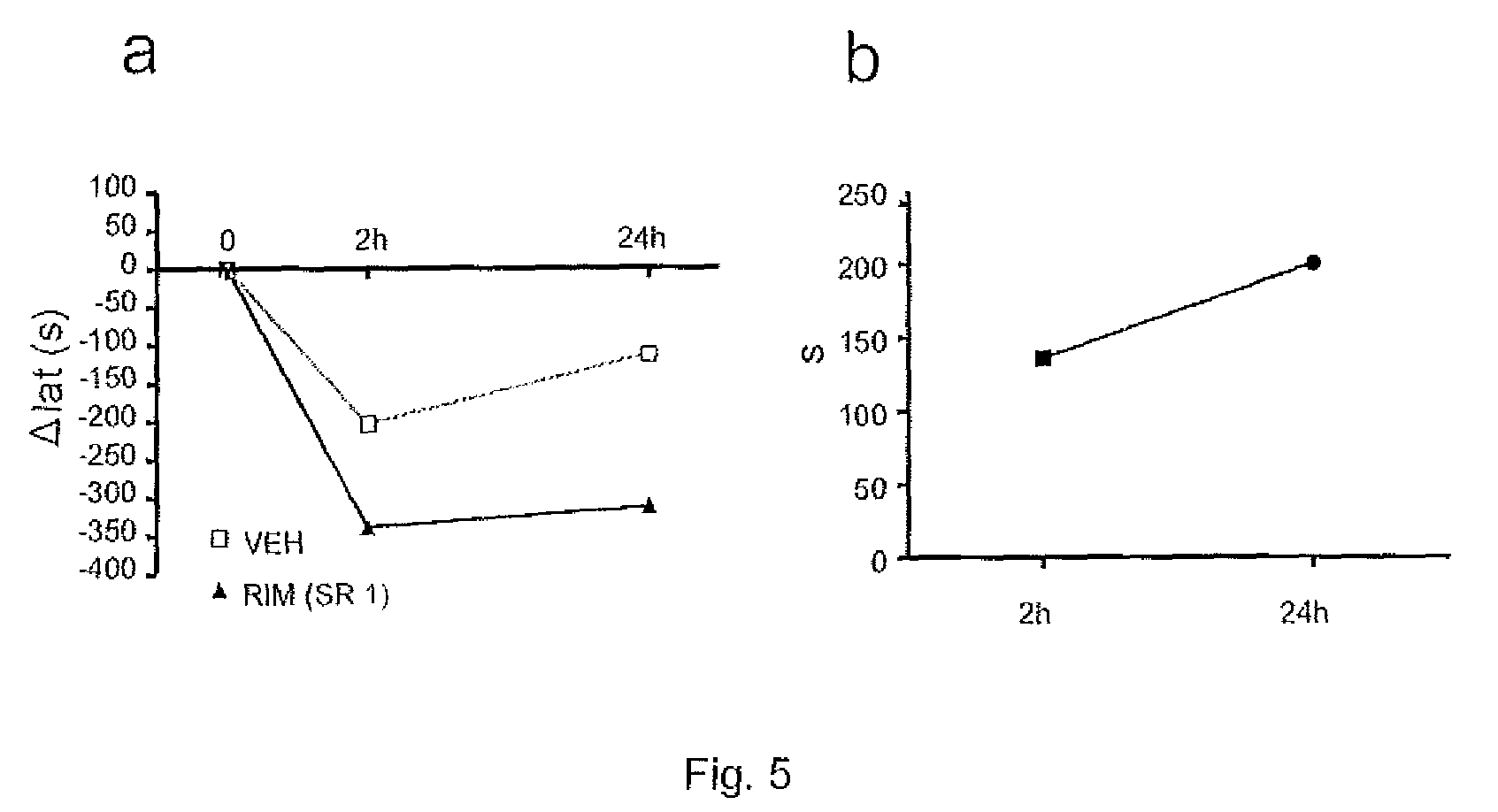Use of CB1 antagonists and/or inverse agonists for the preparation of drugs that increase motor neuron excitability
a technology of motor neuron excitability and inverse agonists, which is applied in the direction of biocide, plant growth regulators, animal husbandry, etc., can solve the problems of few treatments of proven efficacy for activating the arousal system, and no treatment of proven efficacy
- Summary
- Abstract
- Description
- Claims
- Application Information
AI Technical Summary
Benefits of technology
Problems solved by technology
Method used
Image
Examples
example 1
Motor Neuron Excitability
[0089]The following experiments were performed using rimonabant, but it should be understood that in no way should the scope of the present invention be limited to the example proposed below. In contrast, that tested for rimonabant can be extended to other CB1 antagonists or inverse agonists.
[0090]Rimonabant, a CB1 receptor antagonist, penetrates the hematoencephalic barrier and it is well known that, at the doses normally used (20 mg per day), produces psychological effects in healthy human beings with a wide range of symptoms.
[0091]The objective of the present experiments was to use transcranial magnetic and electric stimulation to test the effects of a single dose of 20 mg of rimonabant in motor cortex and spinal motor neuron excitability.
[0092]A neurophysiological examination was carried out before and 24 hours after administration of a single dose of 20 mg of rimonabant.
[0093]Using transcranial magnetic stimulation (TMS) we evaluate the electromyographi...
example 2
Fatigue
[0107]The objective of this study consisted of determining the effects of cannabinoid CB1 receptor antagonists / inverse agonists (Rimonabant—SR141716A—, AM281) on fatigue in rats produced by a conveyer belt.
Material and Methods
[0108]Animals. Male adult Wistar rats were used (300-350 g; 12 weeks old), obtained from Harlan-Interfauna Ibérica (Barcelona, Spain) kept in our animal house in a light:dark cycle of 12:12 hours, receiving food and water ad libitum. The animals were handled in accordance with the guides published in the “NIH Guide for the Care and Use of Laboratory Animals”, the principles covered by the “Guidelines for the Use of Animals in Neuroscience Research” published by the American Neuroscience Society, and the European Union Guidelines (Directive 86 / 609 / EEC). The rats were assigned to the groups with injection of carrier or the CB1 antagonists / inverse agonists (rimonabant (SR141716A) or AM281). Five uninjured animals and 3 injured animals were used for each gro...
example 3
Moderate Spinal Cord Lesion
[0114]The objective of this study consisted of determining the effects of cannabinoid CB1 receptor antagonists / inverse agonists (Rimonabant—SR141716A) in rats with moderate medullary lesion on the locomotion and fatigue produced by conveyer belt.
Material and Methods
[0115]6 animals were subjected to a moderate spinal cord lesion by, using the “Infinite Horizon” motorized system (Precision Systems & Instrumentation, [PSI], Lexington, Ky.). The animals were anaesthetized with an intraperitoneal injection of pentobarbital sodium (45 mg / kg, Normon Veterinary Division, Madrid, Spain) and Xilagesic (2% Xylazine, 10 mg / kg, Calier, Barcelona, Spain). When an absence of reflexes were observed, the rats were injected with a low dose of atropine (50 μg / kg of body weight; Brown Medical, Barcelona, Spain) to reduce salivary and bronchial secretion, and to avoid the presence of bradycardia and a possible cardiac arrest caused by surgery or by xylazine. Artificial tears w...
PUM
| Property | Measurement | Unit |
|---|---|---|
| motor threshold | aaaaa | aaaaa |
| motor threshold | aaaaa | aaaaa |
| time | aaaaa | aaaaa |
Abstract
Description
Claims
Application Information
 Login to View More
Login to View More - R&D
- Intellectual Property
- Life Sciences
- Materials
- Tech Scout
- Unparalleled Data Quality
- Higher Quality Content
- 60% Fewer Hallucinations
Browse by: Latest US Patents, China's latest patents, Technical Efficacy Thesaurus, Application Domain, Technology Topic, Popular Technical Reports.
© 2025 PatSnap. All rights reserved.Legal|Privacy policy|Modern Slavery Act Transparency Statement|Sitemap|About US| Contact US: help@patsnap.com



